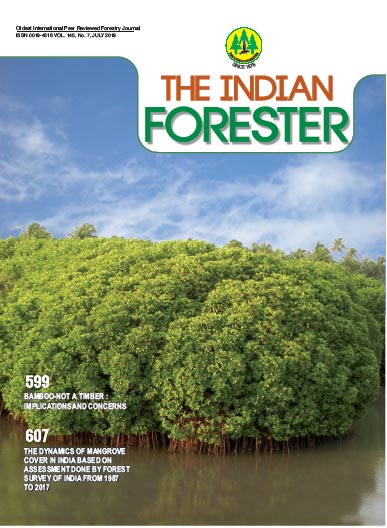Additive Allometric model of Populus sp. Single-Tree Biomass as a Basis of Regional Taxation Standards for Eurasia
DOI:
https://doi.org/10.36808/if/2019/v145i7/147026Keywords:
Genus Populus Sp., Single-Tree Biomass, Allometric Models, Additive Biomass Components, Biological Productivity.Abstract
When using the terms of the volume of database on the level of singletrees of the genus Populus sp., the trans-Eurasian additive allometric models of biomass of for Eurasian Populus trees are developed for the first time, and thereby the combined problem of model additivity and generality is solved. It is harmonized in two ways: it eliminated the internal contradictions of the component and the total biomass equations, and in addition, it takes into account regional differences of trees of equal sizes not only on total, aboveground and underground biomass, but also on its component structure, i.e. it reflects the regional peculiarities of the component structure of tree biomass.References
Baskerville G.L. (1972). Use of logarithmic regression in the estimation of plant biomass. Canadian J. Forest Research, 2: 49-53.
Cunia T. and Briggs R.D. (1984). Forcing additivity of biomass tables: some empirical results. Canadian J. Forest Research, 14: 376-384.
Dong L., Zhang L. and Li F. (2015). A three-step proportional weighting system of nonlinear biomass equations. Forest Science, 61(1): 35-45.
Fu L.Y., Zeng W.S., Tang S.Z., Sharma R.P. and LiH.K. (2012). Using linear mixed model and dummy variable model approaches to construct compatible single-tree biomass equations at different scales-A case study for Masson pine in Southern China. J. Forest Science, 58(3): 101-115.
Jacobs M.W. and Cunia T. (1980). Use of dummy variables to harmonize tree biomass tables. Canadian J. Forest Research, 10(4): 483-490.
Parresol B.R. (2001). Additivity of nonlinear biomass equations. Canadian J. Forest Research, 31(5): 865-878 (https://doi.org/10.1139/x00-202).
Reed D.D. and Green E.J. (1985). A method of forcing additivity of biomass tables when using nonlinear models. Canadian Journal of Forest Research, 15:1184-1187.
Tang S., Zhang H. and Xu H. (2000). Study on establish and estimate method of compatible biomass model. Scientia Silvae Sinica, 36:19-27 (in Chinese with English abstract).
Usoltsev V.A. (2016).Single-tree biomass data for remote sensing and ground measuring of Eurasian forests. CDversion in English and Russian. Yekaterinburg, Ural State Forest Engineering University, ISBN 978-5-94984-600-1 (http://elar.usfeu.ru/handle/123456789/6103).
Downloads
Downloads
Published
How to Cite
Issue
Section
License
Unless otherwise stated, copyright or similar rights in all materials presented on the site, including graphical images, are owned by Indian Forester.





